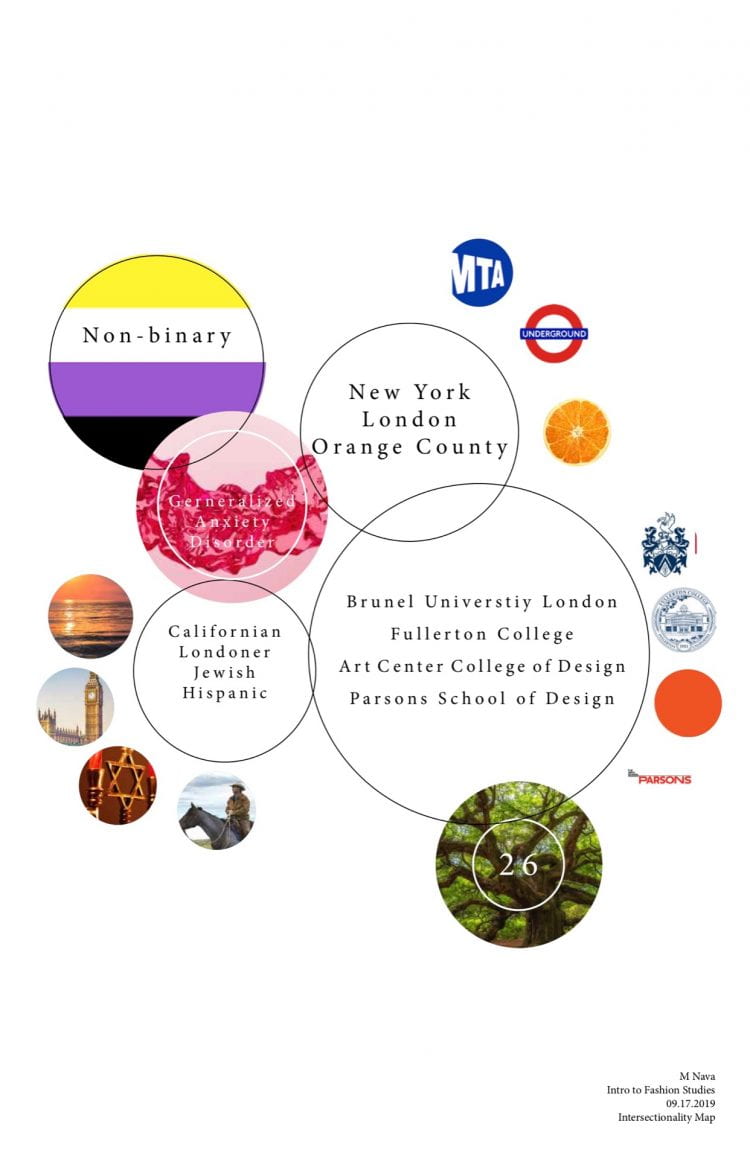M Nava
Intro to Fashion Studies
9.17.19
Intersectionality Map
Intersectionality can be described as the crossroads of where subject positions come together and can be semi-permanent definitions of who you are. It is interconnected subject positions. The subject position is made of you and/or place in society, and is not always a choice. Kimberle Crenshaw developed this theory at Columbia University as she was studying feminist theory, critical race theory, and anti-discrimination law.
Subject positions that I chose for my intersectionality map includes gender, place, age, disability, culture, and education. These subject positions have manifested into gender: non-binary, place: New York, London, and Orange County, age: 26, disability: generalized anxiety disorder, culture: Californian, Londoner, Jewish, and Hispanic, and education: Parsons School of Design, Brunel University London, Fullerton College, and Art Center College of Design. These subject positions have a great effect on my dress practice. As a non-binary person, I have worn clothes that were designed for females, males, and non-binary people. I have noticed that most men in New York have short hair or straight hair, and now I have begun to wear my hair up more than I ever did in any other city I’ve ever lived in before. My age, 26, has affected my dress, I now have to maintain my facial hair, eyebrows, and body hair to maintain the youthful look and feel that I love on my body. My generalized anxiety disorder has made it difficult to wear many clothes because I would worry about how I would be perceived or I would feel judged, but since moving to New York, I have felt more supported to wear a speedo to the beach for the first time in my life. As Kaiser stated in Fashion and Cultural Studies, “…if a man moves too far toward more marked ways of dressing (on either side of the safety zone), he moves into the marked territory. One can be in a marked danger zone because he represents too little care of, or attention to his style-fashion-dress; he is perceived as a sloppy or unclean, inappropriately dressed, or hopelessly out of style. The opposite danger zone is marked in a different way: Too much care of, or attention to, his style-fashion-dress labels him as too effeminate or too fashionable. He may be perceived as gay or as metrosexual, according to Rinallo (2007).” The Italian culture holds similar social rules to the Jewish and Hispanic ethnic communities that I was raised in, which kept me in the closet and prevented me from expressing myself with flamboyant fashion.
Bibliography
1. Kaiser, Susan. Fashion and Cultural Studies. Berg Publishers, 2012.
